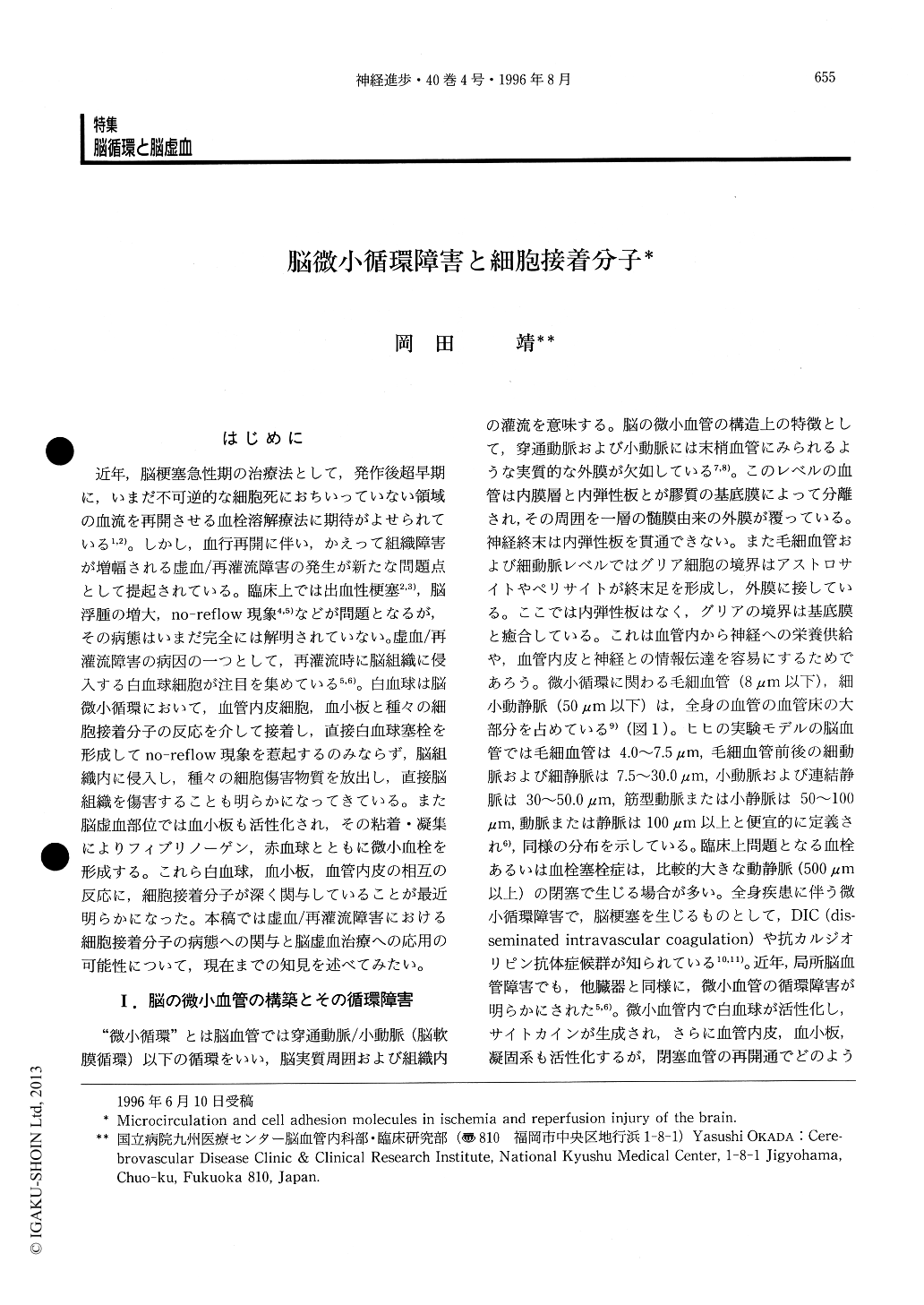Japanese
English
- 有料閲覧
- Abstract 文献概要
- 1ページ目 Look Inside
はじめに
近年,脳梗塞急性期の治療法として,発作後超早期に,いまだ不可逆的な細胞死におちいっていない領域の血流を再開させる血栓溶解療法に期待がよせられている1,2)。しかし,血行再開に伴い,かえって組織障害が増幅される虚血/再灌流障害の発生が新たな問題点として提起されている。臨床上では出血性梗塞2,3),脳浮腫の増大,no-reflow現象4,5)などが問題となるが,その病態はいまだ完全には解明されていない。虚血/再灌流障害の病因の一つとして,再灌流時に脳組織に侵入する白血球細胞が注目を集めている5,6)。白血球は脳微小循環において,血管内皮細胞,血小板と種々の細胞接着分子の反応を介して接着し,直接白血球塞栓を形成してno-reflow現象を惹起するのみならず,脳組織内に侵入し,種々の細胞傷害物質を放出し,直接脳組織を傷害することも明らかになってきている。また脳虚血部位では血小板も活性化され,その粘着・凝集によりフィブリノーゲン,赤血球とともに微小血栓を形成する。これら白血球,血小板,血管内皮の相互の反応に,細胞接着分子が深く関与していることが最近明らかになった。本稿では虚血/再灌流障害における細胞接着分子の病態への関与と脳虚血治療への応用の可能性について,現在までの知見を述べてみたい。
Ischemia and reperfusion injury in embolic and thrombotic stroke has raised inquiries about the changes of microcirculation and cell adhesion molecules in ischemic brain. Accumulation of polymorphonuclear leukocyte (PMN leukocyte) induces “no-reflow” phenomenon by microvascular plugging or releases injurous mediators, both of which exacerbate ischemic brain damage. Activated leukocytes initiate “rolling” response and then have firm adherence on the surface of endothelium and finally transmigrate into brain tissue through the endothelium especially on the postcapillary venules.

Copyright © 1996, Igaku-Shoin Ltd. All rights reserved.


